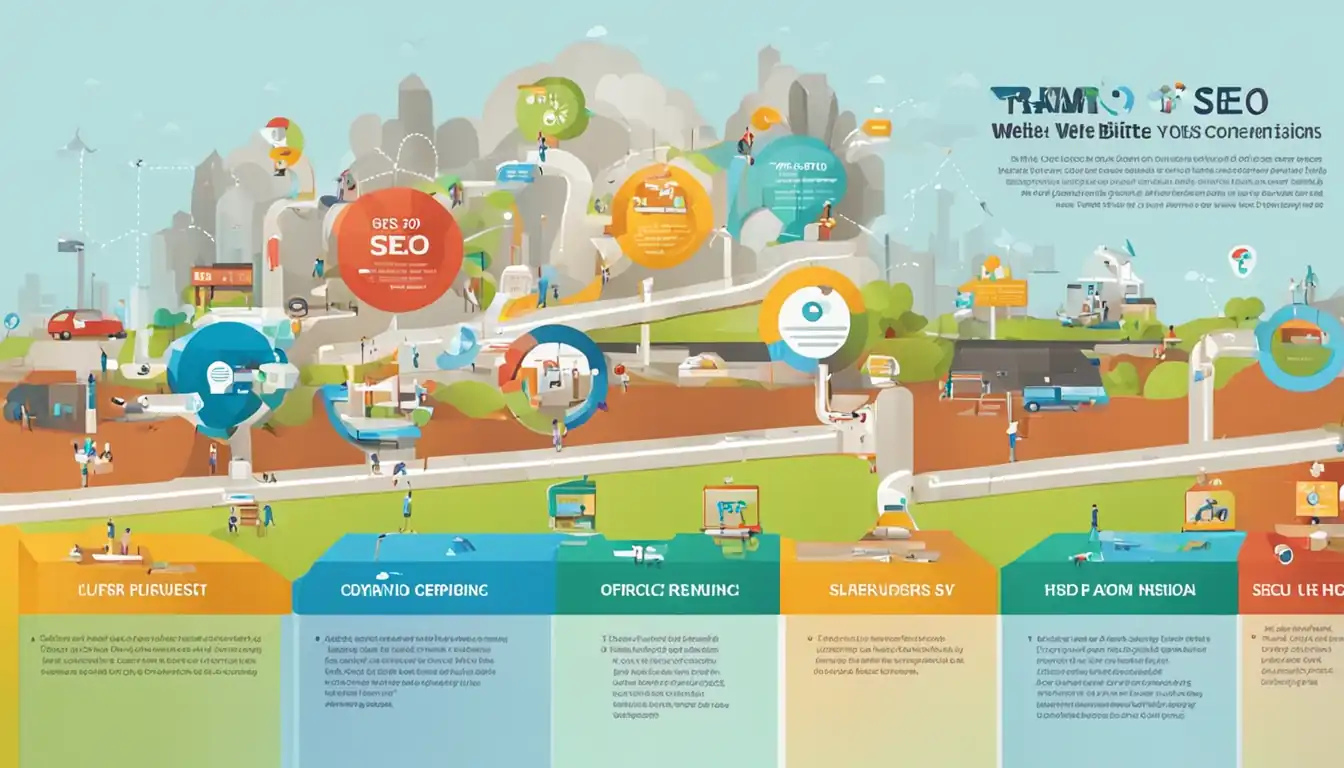Unlocking the Secrets of Content Conversion

In the vast world of digital marketing, content conversion is the key to success. But what exactly is content conversion and why is it so important? Crafting content that resonates with your audience, optimizing for SEO, and enhancing user experience are just a few pieces of the puzzle. Join me as we delve into the secrets of unlocking content conversion to take your online presence to new heights.
Understanding Content Conversion
What is Content Conversion?
Content conversion refers to the process of turning website visitors into leads or customers through engaging and valuable content. It involves creating content that resonates with your target audience, encourages them to take action, and ultimately drives them towards a desired goal, such as making a purchase or signing up for a newsletter.
The Importance in Today's Digital Landscape
In today's highly competitive digital landscape, content conversion plays a crucial role in the success of any online business. With the abundance of information available online, businesses need to create compelling and relevant content that not only attracts visitors but also converts them into loyal customers. By focusing on content conversion, businesses can increase their website traffic, improve their search engine rankings, and ultimately boost their bottom line.
Crafting Content That Converts
Crafting content that converts is an art form that requires a deep understanding of your audience and the ability to captivate them with compelling headlines and subheadings.
Knowing Your Audience Inside Out
Understanding your audience is crucial for creating content that resonates with them. Conduct thorough research to identify their pain points, interests, and preferences. By knowing your audience inside out, you can tailor your content to address their specific needs and provide valuable solutions.
The Power of Headlines and Subheadings
Headlines and subheadings play a significant role in capturing the attention of your audience. Craft headlines that are engaging, concise, and relevant to the content. Use subheadings to break up the text and make it easier for readers to scan through the information. A well-crafted headline can draw readers in, while strategically placed subheadings can keep them engaged throughout the entire piece.
The Role of SEO in Content Conversion

In the world of digital marketing, Search Engine Optimization (SEO) plays a crucial role in driving traffic to your website and ultimately converting that traffic into leads or sales. When it comes to content conversion, SEO is your best friend. By optimizing your content for search engines, you increase its visibility and make it easier for potential customers to find you online.
Keywords: Finding Your Golden Nuggets
One of the key elements of SEO is keyword research. Keywords are the words or phrases that people type into search engines when looking for information, products, or services. By identifying the right keywords for your business and incorporating them strategically into your content, you can attract more organic traffic to your website.
To find the best keywords for your content, start by brainstorming a list of relevant terms and phrases that potential customers might use to search for your products or services. Use keyword research tools like Google Keyword Planner, SEMrush, or Ahrefs to expand your list and identify high-volume keywords with low competition.
Once you have identified your target keywords, incorporate them naturally into your content. Avoid keyword stuffing, as this can harm your rankings and turn off readers. Instead, focus on creating high-quality, informative content that provides value to your audience while also incorporating relevant keywords in key areas such as titles, headings, meta descriptions, and body copy.
On-Page SEO Tactics That Work Wonders
In addition to keyword optimization, there are several on-page SEO tactics that can help improve the conversion rate of your content:
Optimize Meta Tags: Meta tags such as title tags and meta descriptions are important elements that appear in search engine results pages (SERPs). Make sure they are descriptive, compelling, and include relevant keywords to entice users to click through to your website.
Improve Page Load Speed: Slow-loading websites can frustrate users and lead to higher bounce rates. Optimize images, minify code, enable browser caching, and utilize Content Delivery Networks (CDNs) to improve page load speed and provide a better user experience.
Create Compelling Call-to-Actions (CTAs): Include clear CTAs throughout your content that prompt users to take action such as signing up for a newsletter, downloading a whitepaper, or making a purchase. Make sure CTAs stand out visually and are placed strategically within the content.
By implementing these on-page SEO tactics along with effective keyword optimization strategies, you can unlock the secrets of content conversion and drive more qualified leads to your website.
Enhancing User Experience for Better Conversion
Creating a seamless and enjoyable user experience is crucial in converting visitors into customers. By focusing on key aspects such as website navigation, speed, and mobile optimization, you can significantly improve your content conversion rates.
Website Navigation and Its Impact on Readers
One of the first things to consider when looking to enhance user experience is website navigation. A well-organized and intuitive navigation system can help users easily find the information they are looking for, leading to increased engagement and ultimately higher conversion rates.
- Clear Menu Structure: Ensure that your website has a clear and concise menu structure that guides users to the most important pages.
- Internal Linking: Utilize internal linking to connect related content and guide users through your website seamlessly.
- Search Functionality: Implement a search function that allows users to quickly find specific information on your website.
Speed and Mobile Optimization: Why They Matter
In today's fast-paced digital world, speed is key. Users expect websites to load quickly, especially on mobile devices. Slow loading times can lead to high bounce rates and decreased conversions.
- Page Load Speed: Optimize your website's images, code, and server response time to ensure fast loading speeds.
- Mobile Responsiveness: With more users accessing websites on mobile devices, it is essential to have a responsive design that adapts to different screen sizes.
- Mobile-Friendly Content: Tailor your content for mobile users by using shorter paragraphs, larger fonts, and easy-to-click buttons.
By focusing on enhancing user experience through improved website navigation, speed optimization, and mobile responsiveness, you can unlock the secrets of content conversion and drive better results for your business.
Analyzing and Optimizing Your Content Strategy
Crafting compelling content is just the first step in the journey towards successful content conversion. To truly unlock the secrets of content conversion, you need to analyze and optimize your content strategy continuously.
Tools to Measure Content Performance
Utilizing tools to measure the performance of your content is crucial in understanding what works and what doesn't. Here are some essential tools that can help you track and analyze your content's effectiveness:
- Google Analytics: This powerful tool provides valuable insights into how users interact with your website, including which pages are performing well and where visitors are dropping off.
- SEMrush: A comprehensive SEO tool that can help you track keyword rankings, monitor backlinks, and analyze competitor strategies to improve your own content performance.
- Hotjar: By offering heatmaps, session recordings, and user feedback tools, Hotjar allows you to visualize how users navigate through your site and identify areas for improvement.
- BuzzSumo: This tool helps you discover popular topics in your industry by analyzing social media shares and backlinks, enabling you to create more engaging and shareable content.
By leveraging these tools effectively, you can gain valuable insights into what resonates with your audience and make data-driven decisions to optimize your content strategy.
Learning from Analytics: A Continuous Improvement Cycle
Analyzing data from these tools is just the beginning; it's essential to turn insights into action through a continuous improvement cycle:
"Data without action is just numbers on a page."
- Identify Key Metrics: Determine which metrics matter most for measuring content performance, such as bounce rate, time on page, or conversion rate.
- Set Goals: Establish clear goals for each piece of content based on these key metrics to track success accurately.
- Test and Iterate: Experiment with different approaches like A/B testing headlines or CTAs to see what drives better results, then iterate based on those findings.
- Monitor Progress: Regularly review analytics data to see how changes impact performance and adjust strategies accordingly.
By following this continuous improvement cycle based on data-driven insights from analytics tools, you can refine your content strategy over time for maximum impact on conversion rates.
Conclusion
By understanding the nuances of content conversion, crafting compelling content, optimizing for SEO, and enhancing user experience, you can create a winning strategy that drives results. Remember to analyze and optimize your efforts continuously using tools and analytics to stay ahead of the game. With these secrets unlocked, you'll be well on your way to converting visitors into loyal customers and achieving your digital marketing goals.